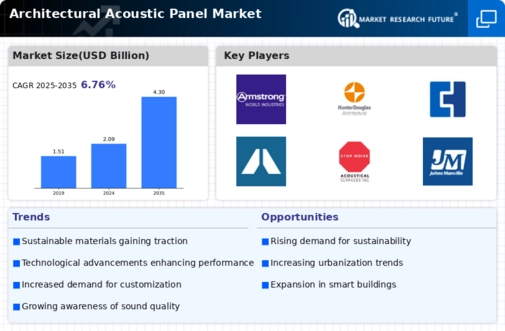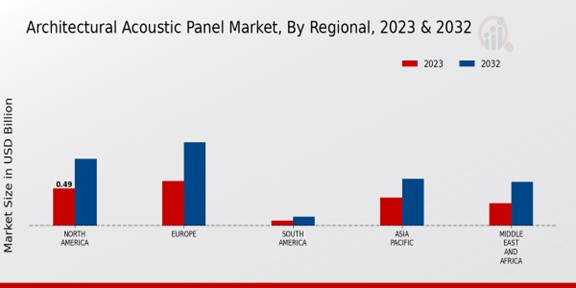Architectural Acoustic Panel Market Summary
The Global Architectural Acoustic Panel Market is projected to grow from 2.09 USD Billion in 2024 to 4.3 USD Billion by 2035, reflecting a robust growth trajectory.
Key Market Trends & Highlights
Architectural Acoustic Panel Key Trends and Highlights
- The market is expected to expand at a compound annual growth rate of 6.78 percent from 2025 to 2035.
- By 2035, the market valuation is anticipated to reach 4.3 USD Billion, indicating substantial growth opportunities.
- In 2024, the market is valued at 2.09 USD Billion, laying a solid foundation for future expansion.
- Growing adoption of sustainable building materials due to increased environmental awareness is a major market driver.
Market Size & Forecast
| 2024 Market Size | 2.09 (USD Billion) |
| 2035 Market Size | 4.3 (USD Billion) |
| CAGR (2025-2035) | 6.78% |
Major Players
Armstrong World Industries, IAC Acoustics LLC, Hunter Douglas Architectural, CertainTeed, USG Interiors, Rockfon, SaintGobain Ecophon, Acoustical Surfaces, Johns Manville, BuzziSpace, Guardian Fiberglass, Interface, MechoShade Systems, ICP Group, Knauf Insulation, Mermet













